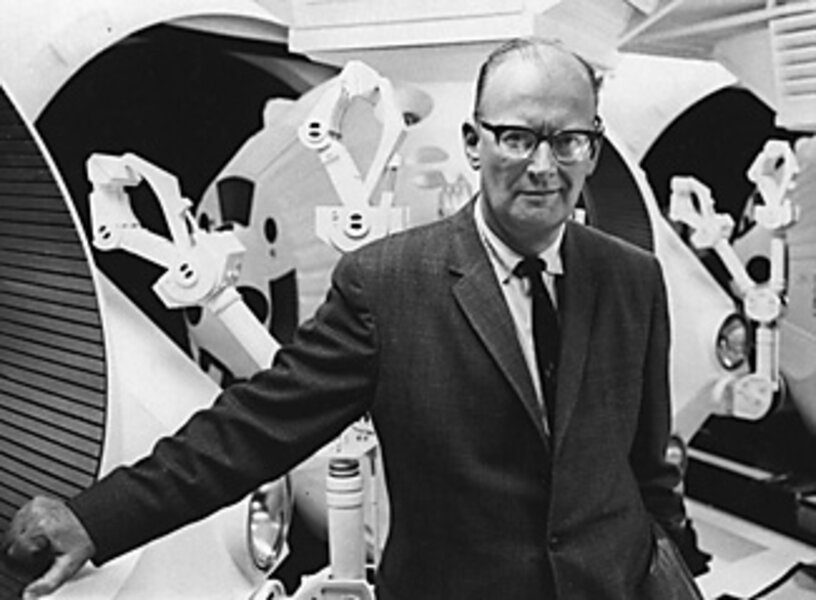Arthur C. Clarke: an inventor of the world as we know it today
Loading...
Sir Arthur C. Clarke, who died on March 19, was a rationalist who combined a soaring imagination with a background in the matter-of-fact physical sciences. Despite his down-to-earth beliefs, Sir Arthur was fascinated with both the irrational and religious beliefs – even as he affirmed time and time again that he had no such beliefs.
While Isaac Asimov imagined how humanity might relate to his subservient robots, Sir Arthur created aliens so different from humans that communication was impossible. While Robert Heinlein wondered whether democracy and the nuclear family would survive, Sir Arthur moved from his native England to Sri Lanka to live a life of self-imposed exile.
Sir Arthur's service in the Royal Air Force during World War II gave him an entry into academia and the sciences that his working-class upbringing had denied him. After the war he earned a degree in math and physics but at the same time he began to sell science fiction stories to magazines such as Astounding, Cosmos, and Startling Stories. These first stories incorporated many of the lifelong obsessions that would make his name one of the pillars of our mid-to-late-20th-century view of the future.
In 1953, he published perhaps his two best works: a short story, "The Nine Billion Names of God," and a novel, "Childhood's End." Both involve religion and have mankind moving, as Sir Arthur saw it, up a step in the evolutionary ladder. They are both simple yet tragic and – particularly for newcomers to Sir Arthur's vision – mind-blowing.
Contact with the unknown
Sir Arthur was obsessed with the idea of our first contact with aliens. His best works were firmly based in rationality, but within them was always an element of the incomprehensible that would change the world forever. Over and over Sir Arthur told the story of humans meeting the absolute unknown and failing to communicate with it.
Sir Arthur wrote more than 100 books. Even in some of his later, more watered-down novels and sequels, the unknowable remained his favorite plaything. But despite this fascination, Sir Arthur continued to be an absolute secular atheist with a strong dislike for the extremes toward which religion can push people.
He also influenced generations of children with his 13-episode television series, "Arthur C. Clarke's Mysterious World" (1980), and then a 12-episode follow-up, "Arthur C. Clarke's World of Strange Powers" (1985). Both series featured an iconic crystal skull in the credits, after which Sir Arthur would introduce each episode. Topics ranged from UFOs to dowsing, yetis to telekinesis.
Before that, Sir Arthur's collaboration with Stanley Kubrick on the film version of "2001 Space Odyssey" had changed the way we saw the future, introducing to pop culture the notion that life with all those robots might be less than utopian.
A champion of satellites and gorillas
In recent years, Sir Arthur was often interviewed or called on for commentary (usually provided by videophone) at events or anniversaries that he had influenced and encouraged: satellite launchings, space station updates, or anything championing the survival of lowland gorillas in Central Africa (for whom Sir Arthur became an impassioned advocate). The media relied on him for sharp, funny, unsentimental, and technologically savvy quotes. But the real reason they kept going back was that he was one of the thinkers who wrote and dreamed our age into being. He was not just a great writer but one of the inventors of the world as we know it today.
While Sir Arthur may not have believed an afterlife, he will live long in our hearts and memories.
• Gavin J. Grant is a freelance writer and editor in Northampton, Mass.





